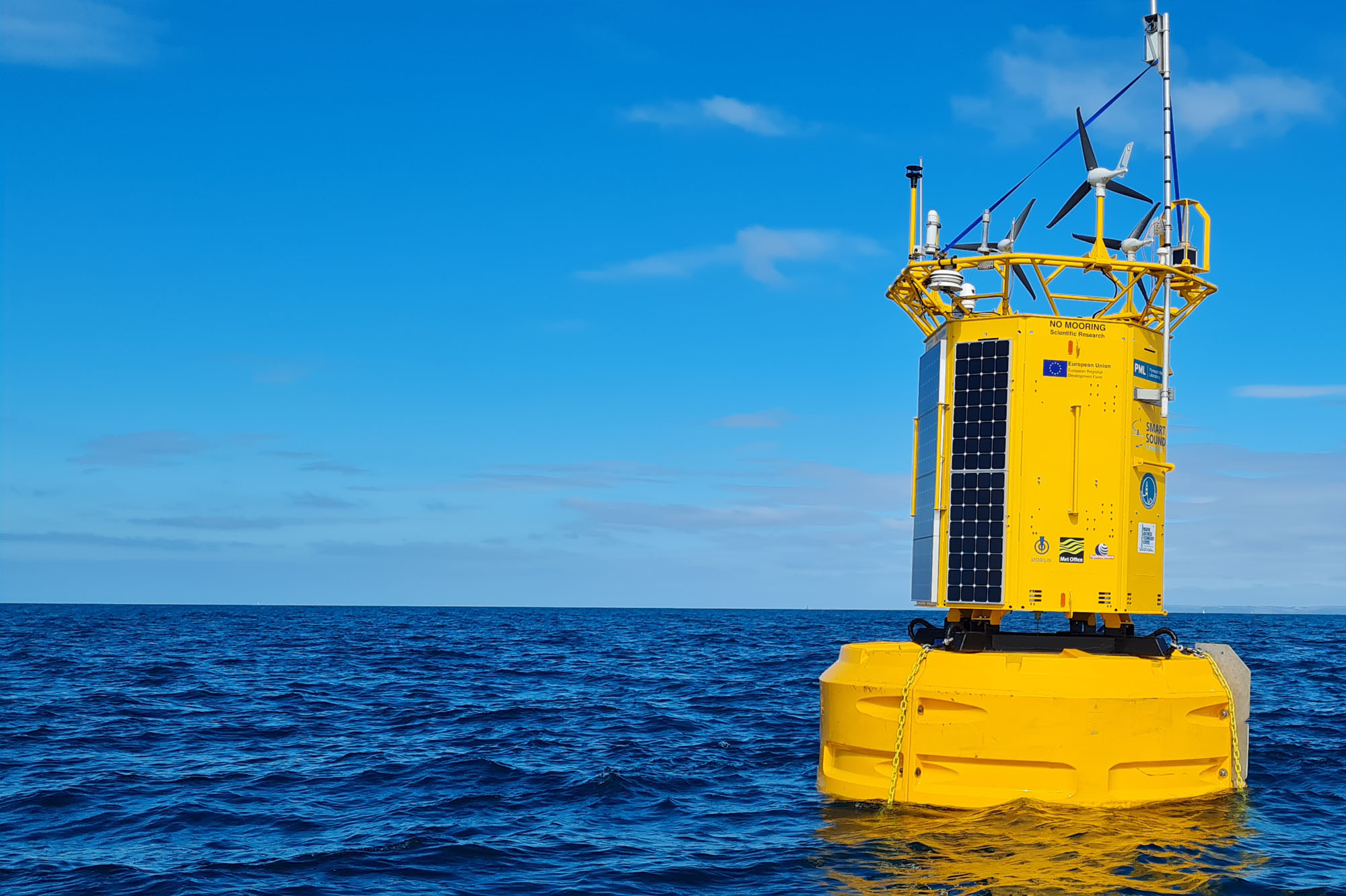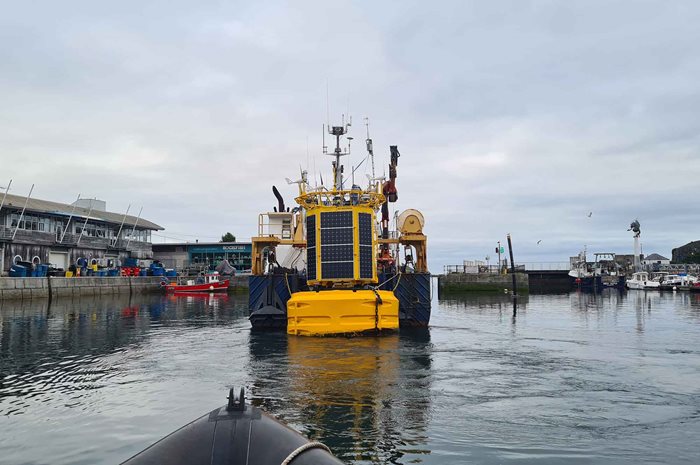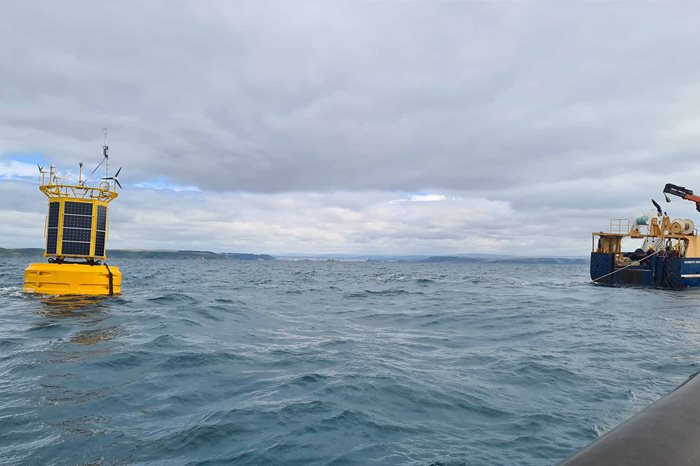Story
Plymouth Marine Laboratory successfully deploys state-of-the-art scientific data buoy off Plymouth
6 July 2022

Plymouth Marine Laboratory (PML) is delighted to announce that this week (Monday 4th July 2022) its new Smart Sound buoy was successfully deployed to its mooring in the Western Channel Observatory area of the English Channel, where it is now anchored and has begun gathering crucial data.
The custom-built, 8.5 metre-tall autonomous data buoy is designed to deliver an unprecedented level of environmental data and will help provide a unique capability for UK marine science, technology and innovation.
As part of a fleet of interconnected marine technologies, it will play a key role within Smart Sound Plymouth – the multi-million-pound, first-of-its-kind initiative to create an unrivalled proving ground for high-tech marine innovation and support existing world-leading marine science capabilities off the Devon coast.
The buoy was funded by the European Regional Development Fund through the Marine Business Technology Centre (MBTC), of which PML is a key delivery partner. The MBTC provides industry free access to the buoy for innovative trials, validation and demonstration of marine technologies. The buoy has been designed to facilitate ‘plug and play’ capability for third party sensors and boasts huge power availability and high-speed communications.
Following rigorous preparations and fine-tuning, the buoy was towed out from Sutton Harbour to its mooring by PML’s research vessel, the Plymouth Quest.

Above: Data buoy pictured leaving Sutton Harbour, towed by PML's ship The Plymouth Quest
The buoy is equipped with a sophisticated scientific payload with oceanographic sensors profiling through the water column several times a day. These sensors are measuring standard parameters such as temperature and salinity but also measuring the amount of single cell plants, called phytoplankton, in the ocean. Other important scientific measurements include dissolved oxygen, pH, the clarity of the water and nutrient levels.
Plymouth Marine Laboratory has a long and well-established collaboration with the Met Office which has also provided a full meteorological monitoring system on the buoy. The data from the buoy will be transmitted each hour to both PML and the Met Office, where it will be used to deliver forecasting models.
Dr James Fishwick, Head of Smart Sound Plymouth, said:
“Smart Sound Plymouth is a first-of-its-kind within the UK, and the successful launch of the buoy is a real milestone. It’s fantastic to see it finally in the water, especially given delays as a result of the COVID-19 pandemic. We’re incredibly grateful to all the partners involved for helping to make this happen. The buoy will help give us the most advanced capabilities to monitor the marine environment, and test new products and innovations within it. It’s a game-changer for UK marine tech and innovation and opens up new realms of possibilities for what the future might hold. This is a really exciting time for Plymouth and the rapidly growing marine tech sector in the South West and beyond.”
 Above: The Plymouth Quest pictured leaving the data buoy at its new home in the Western Channel Observatory
Above: The Plymouth Quest pictured leaving the data buoy at its new home in the Western Channel Observatory